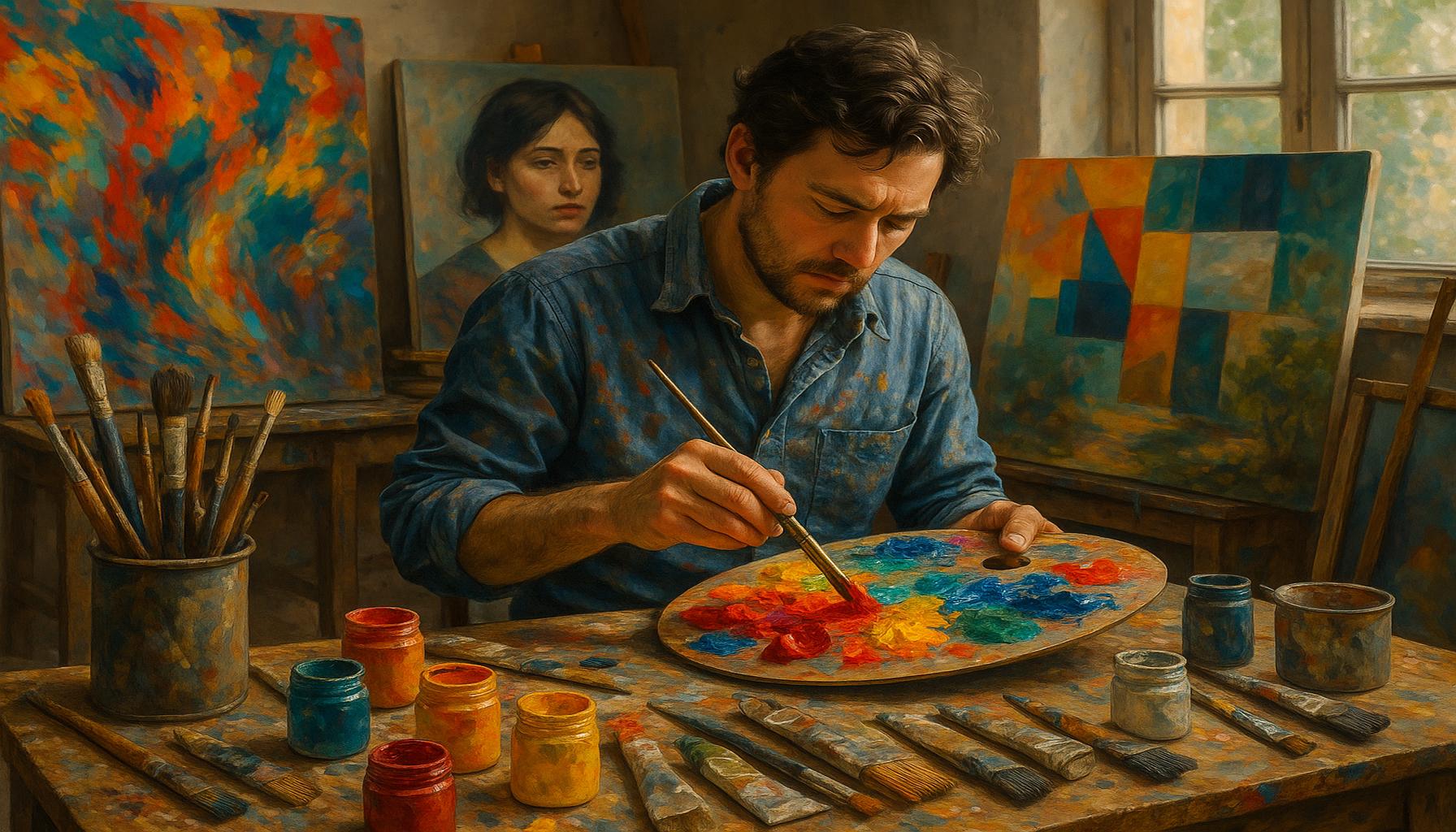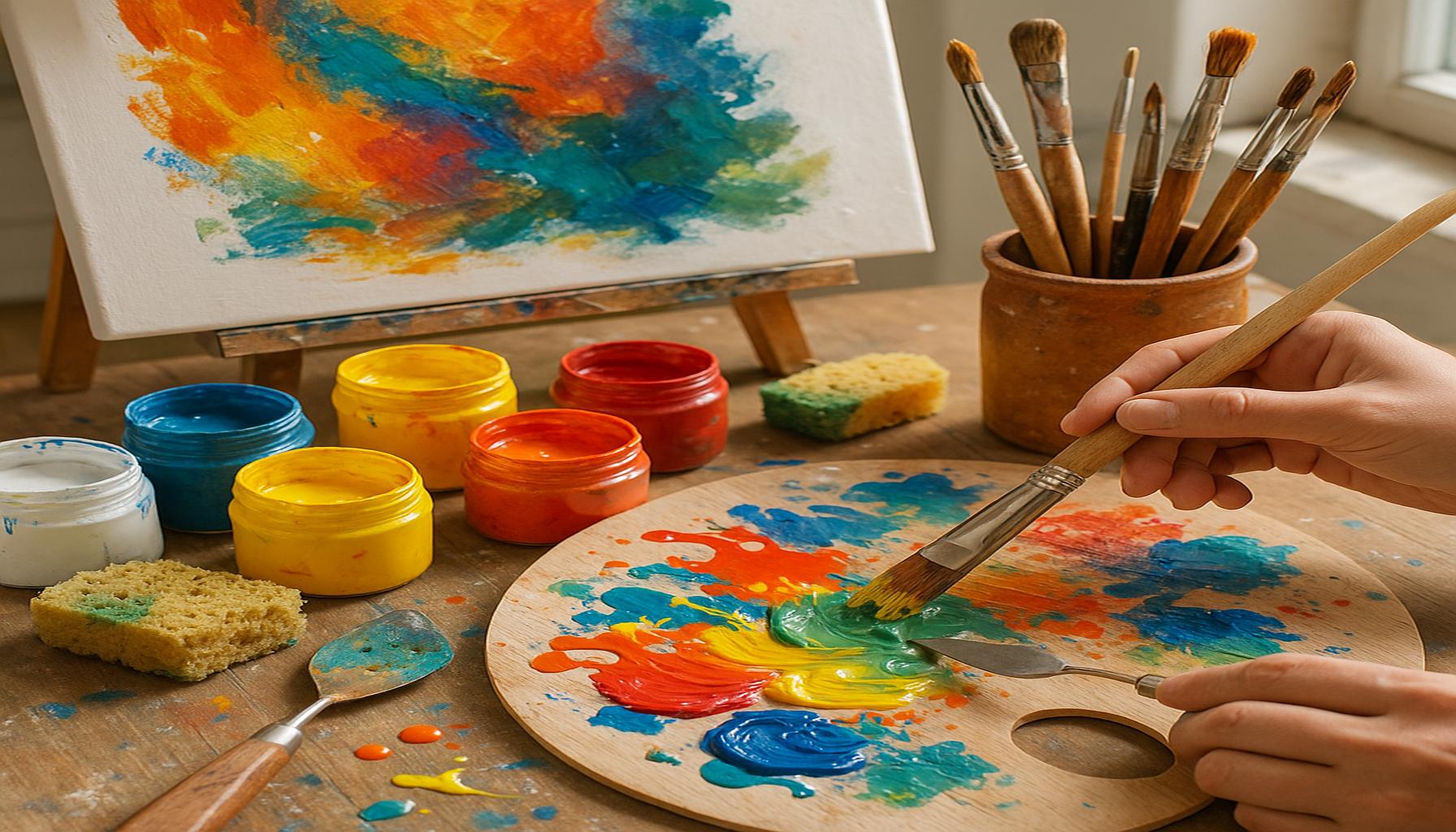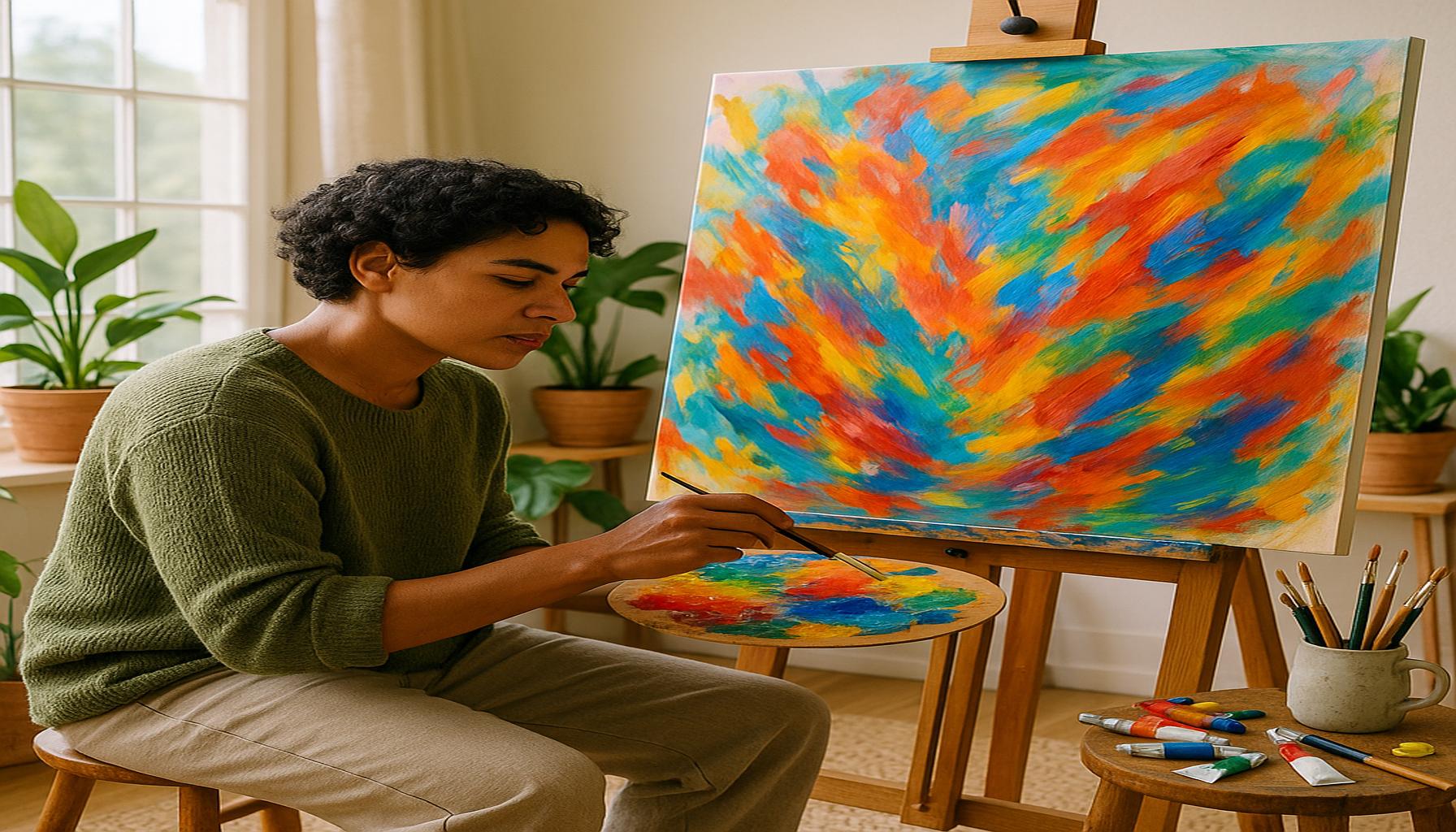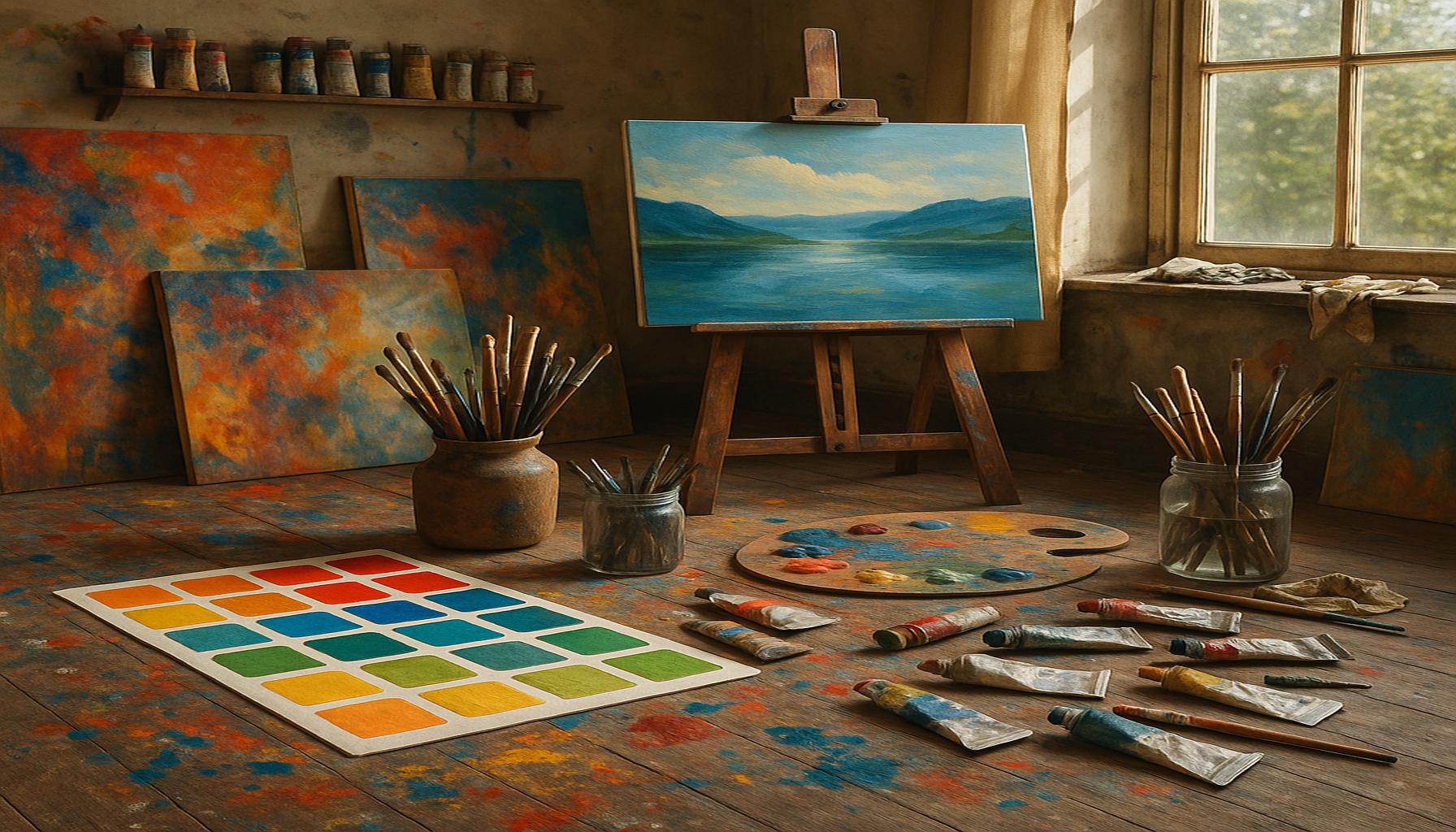Creating a Personal Style: Finding Your Unique Voice in Painting

Exploring the Dimensions of Artistic Expression
Every artist yearns to express their unique vision. However, finding that distinct voice can be a journey filled with exploration and experimentation. As you paint, you can unveil your personal style through a blend of technique, emotion, and creativity. This process not only helps in expressing your individuality but also allows you to connect with others on a deeper level through your artwork.
Consider the following elements that contribute to developing a personal style in painting:
- Technique: Explore different painting methods, such as watercolor, oil, or acrylic. Each medium offers unique characteristics—watercolor brings fluidity and luminosity, while oil paints provide richness and depth. Experimenting with these techniques can reveal the nuances of your artistic preferences. For example, the smooth blending in oil painting allows for more realistic portrayals, whereas watercolor can create ethereal and dreamy landscapes.
- Color Palette: Identify colors that resonate with your emotions and experiences. Psychologically, colors can evoke feelings; vibrant reds may symbolize passion, while soft blues might convey tranquility. By consciously choosing your color palette, you can enhance the emotional impact of your work. Look at artists like Mark Rothko, who famously used color to evoke deep emotional responses.
- Subject Matter: Focus on themes that inspire you, such as landscapes, portraits, or abstract forms. Reflecting on your life experiences can lead to compelling subject matter that feels authentic. For instance, the way Frida Kahlo incorporated personal pain and heritage into her self-portraits revolutionized the idea of narrative in art.
- Influences: Draw inspiration from artists that you admire while infusing your energy. Investigate the works of famous painters, whether it be the surreal elements of Salvador Dalí or the bold strokes of Vincent van Gogh. By studying how others have shaped their artistic identities, you can gain insights into your own creative process.
Great artists like Georgia O’Keeffe and Jackson Pollock have crafted their identities by embracing their environments and stories. O’Keeffe’s work reflects the landscapes of the American Southwest, often employing vibrant colors and organic forms, while Pollock’s unique drip technique transformed abstract expressionism. By studying their work, you can discover how personal narratives and context shape art.
As you navigate this creative path, ask yourself: What makes your perspective distinct? Reflect on your cultural background, experiences, and beliefs. Finding answers will lead you to your artistic voice. In the world of painting, building a personal style is not just about how you create, but also about why you create. This introspection is vital for producing work that is not only aesthetically appealing but also deeply resonant.
Embark on this adventure to find your unique voice in painting, and let it resonate on the canvas. Whether you are creating for personal satisfaction, social commentary, or aesthetic expression, your journey will enrich both your craft and your understanding of the world around you. So gather your paints, embrace your creativity, and let your artistic identity emerge.
DIVE DEEPER: Click here to uncover the emotions behind colors
Embracing Individuality Through Technique and Medium
Creating a personal style in painting is akin to crafting a signature; it’s a reflection of your identity, emotion, and vision. One of the first steps in this self-exploration is through the techniques and mediums you choose to work with. Each medium comes with its own characteristics and challenges, begging you to engage in a dialogue with your canvas. For instance, oil paints allow for meticulous blending and layering, producing a sense of realism and depth that may resonate with those who find beauty in meticulous detail. On the other hand, acrylics dry quickly, offering spontaneity and vibrancy—ideal for artists who prefer to capture moments of inspiration in bold strokes.
Additionally, watercolor painting can evoke a softer, more ethereal quality, enabling artists to convey emotion through movement and unpredictability. The choice of medium is not merely practical; it becomes part of your narrative, influencing how you express your subject matter and connect emotionally with your viewers. Take time to explore these different avenues, as familiarizing yourself with various painting styles can unveil unexplored dimensions of your artistic potential.
Understanding the significance of your color palette is another crucial element in establishing a personal style. Artists often develop distinct palettes that align with their emotional landscape or thematic focus. Consider the impact of colors on mood and perception—bright yellows may inspire joy, while deep blues might signify introspection. As you experiment, pay attention to how certain colors resonate with you personally; they can serve as a reflection of your internal experiences. Analyze the works of the great Color Field painters, like Helen Frankenthaler, who utilized color to evoke profound emotional responses without the need for representational forms.
Discovering Themes and Subject Matter
Equally important is the subject matter that captivates your imagination. Your own life experiences, cultural background, and personal interests can offer an endless array of themes to explore. Consider taking inspiration from the world around you—nature, urban landscapes, or personal relationships. Reflecting your own life’s journey through your art can create authenticity that resonates with others. Artists like Vincent van Gogh poured their emotions into their work, often depicting both mundane and extraordinary moments of life while imbuing them with a sense of personal struggle and beauty.
Once you have considered these elements, reflect on the influences that have shaped your vision. Look at artists you admire and dissect what draws you to their work. Whether it is the surreal undertones of Georgia O’Keeffe’s florals or the expressive brushstrokes of Edward Munch, understanding what captivates you can guide your own artistic exploration. The beauty of this process lies in your ability to take fragments from various inspirations and weave them into a style that is uniquely yours.
The pursuit of establishing a personal style is rich with possibility. As you continually experiment with different techniques, colors, and subjects, you will start to see patterns emerge that align with your voice. Ultimately, knowing what you wish to convey through your art will guide you closer to discovering your authentic artistic expression.
| Technique Exploration | Creative Freedom |
|---|---|
| Mixed Media | Allows artists to blend diverse materials, creating unexpected effects and textures. |
| Gesture and Movement | Emphasizes spontaneity in brushwork, revealing the artist’s emotional journey. |
| Color Theory | Understanding color interactions enhances visual storytelling and emotional resonance. |
| Abstract vs. Realism | Exploring various styles can spark new interpretations of personal experiences and perspectives. |
In painting, technique exploration is vital to cultivate a personal style. Understanding how to manipulate mediums, like mixed media, not only fosters innovation but also allows artists to express their unique identities through a combination of textures and colors. This often leads to unexpected results that captivate viewers and invite them into the artist’s imagined world. Moreover, embracing creative freedom through gesture and movement can illuminate the emotional landscape behind each stroke. By prioritizing spontaneity, artists can translate feelings onto the canvas, creating a direct link between their emotions and the visual narrative. Likewise, grasping color theory equips them with the ability to craft deliberate contrasts and harmonies, enhancing the depth of visual storytelling.Ultimately, whether choosing to delve into abstract expressions or refined realism, exploring various styles allows painters to articulate their unique perspectives, making their personal style distinctly identifiable. This ongoing journey of self-discovery is what sets each artist apart, inviting others to witness the beauty in their individual voices.
DIVE DEEPER: Click here to discover more about sustainable sculptures
Exploring Inspiration and Personal Narrative
In the journey to crafting a personal style, understanding the importance of inspiration becomes paramount. Inspiration can be found in the unlikeliest of places, and often, it stems from day-to-day life. Artists across history have drawn from their surroundings, allowing their unique perspectives to color how they depict reality. For example, the vibrant street art in urban settings often reflects the culture and socioeconomic challenges of neighborhood communities. This form of expression showcases an artist’s true voice while simultaneously conveying larger societal narratives.
Consider integrating your own life experiences into your work. This can foster a deeper connection with your audience. For instance, many artists find that their personal journeys—be it struggles with mental health, profound losses, or incomparable joys—can serve as powerful backdrops for their artistic narratives. Frida Kahlo’s self-portraits are intimate reflections of her pain and her identity, enabling her to connect emotionally with viewers on a universal scale. By harnessing your personal story, you provide an authenticity that invites viewers to engage with your work more genuinely.
Balancing Technical Skill with Emotional Impact
While technique plays a vital role in painting, achieving emotional impact is equally crucial for developing a personal style. As you gain proficiency in your chosen medium, consider how you can bend the rules to enhance emotional resonance. For example, using exaggerated forms or unusual color selections can create a sense of tension or unease, leading the viewer to delve deeper into the artwork’s narrative. The abstract works of artists like Wassily Kandinsky demonstrate this principle; his use of color and form serves not just to represent but to evoke, pushing the boundaries of traditional painting.
Another pivotal element to explore is the concept of composition. How you arrange the elements within your piece can dramatically affect its emotional tone. Classic principles, such as the rule of thirds, can be a starting point, but feel empowered to break away from convention. Experimenting with asymmetry and dynamics can lead to surprising outcomes that better convey your voice. Artists like Jackson Pollock leveraged chaotic compositions to capture the tumultuous emotions that echo in his work, reminding us that even disorder can convey meaning.
Engaging with the Art Community
Finding your unique voice is not a solitary endeavor. Engaging with the art community can enrich your journey by providing valuable feedback and fresh perspectives. Attend gallery shows, art fairs, or local workshops to immerse yourself in inspiring environments. Networking with other artists, both emerging and established, offers opportunities to exchange ideas, techniques, and inspirations. These interactions can ignite creativity that propels your work forward.
Consider joining online platforms or social media groups dedicated to painting, where artists share their works-in-progress, struggles, and triumphs. Blogs and forums can also serve as creative watering holes, offering you insights into the processes of others, enabling you to glean new techniques or approaches that resonate with your aspirations. Such collaborative environments can facilitate growth, helping you to refine your unique style based on collective experiences.
Ultimately, the path to finding your unique voice in painting involves continual exploration—of self, technique, and the world around you. By intertwining your personal narrative with impactful composition and active engagement in the art community, you will forge a distinctive style that speaks not just of technique but of authenticity and emotion, drawing viewers into your personal universe.
DISCOVER MORE: Click here to learn how creative writing can enhance your mental well-being
Conclusion: Embracing Your Artistic Identity
In conclusion, the quest for creating a personal style in painting is a dynamic and ongoing process, one that encourages artists to explore their own identities deeply. The synthesis of inspiration, personal narrative, and technical skill becomes the foundation upon which a distinctive voice is built. As you navigate your artistic journey, remember that it’s perfectly normal to evolve. Each brushstroke can unveil new layers of your experience, crafting a visual language that speaks not only to your own heart but also resonates with your audience.
More than merely applying paint to canvas, finding your unique expression involves embracing vulnerability. Art has the power to create dialogue, and authentic storytelling can spark profound connections with viewers. Whether you draw from your life experiences, societal observations, or the natural world, your authenticity will shine through. Moreover, don’t underestimate the importance of community engagement; collaborative experiences with fellow artists enhance your perspective and nurture growth.
Finally, remain open to experimentation. Challenge conventions, explore various styles, and allow yourself the freedom to deviate from the expected. As you embark on this exhilarating exploration, remember that your personal voice is uniquely yours—there is no wrong way to express it. Dive into the process with passion, and let each piece you create unveil anew the essence of who you are as an artist.



